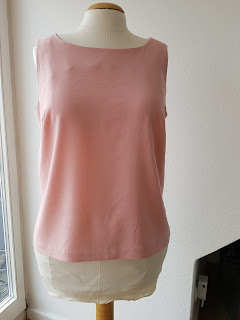I quite like knitting socks - they're easy, portable, don't take a lot of yarn, and hand knit socks are comfortable to wear. I've knit 4 more pairs since my Sockapalooza round up of sock knitting about a year ago. Two pair are for me and two are for my husband. I also have 1 sock without a mate - I'm unsure if I like the way the sock fits and may not knit the second.
But here are the finished socks over the last year:
 |
| "Pairfect" Socks for husband |
 |
| Stripey socks for husband |
 |
| "Istanbul" socks for me |
 |
| "Pairfect" socks for me |
With the exception of the reddish colored Istanbul socks, all of these were knit with Regia brand sock yarn and I must say that it is hands down my favorite yarn for socks. Regia is a German sock yarn from the Schachenmayr company, which is super lucky for me because I live in Germany and I can get it for cheap at the grocery store, one aisle over from the produce. The yarn is often "last year's" selections, but we're talking 5€ (currently about $5.40) for one pair of socks (the same yarn sells for about 8-10€ elsewhere). I've tried other grocery store yarn but even though it was advertised as "super wash" and supposed to withstand machine washing, the socks I knit out of it shrank and felted when I washed them on cold (no dryer). I wash my Regia socks the same way, hang them to dry, and they're great! Now I've also knit with much more expensive sock yarns, some of which are hand-dyed and lovely to knit with and pretty to look at, but they too haven't withstood the washing machine, and they've also worn out after only a few wearings. The Regia socks are holding up much much better. I think my fancy sock yarns might become scarves and shawlettes instead.
The Istanbul socks are named because I used sock yarn I purchased in Istanbul. The yarn was actually labeled for sale in Germany because Turkey manufactures a lot of yarn for Germany, including some for Schachenmayr. The yarn I used for the Istanbul socks was a mix of wool, bamboo, and nylon. I also knit a pattern for these socks - the picture makes the socks look a bit fuzzy or even "boucle-like" but they aren't, it's just the pattern I chose. All the rest of the socks here were just knit with plain stockinette, partially because the yarn striped and I wanted the stripes to show, but mostly because plain stockinette is easy, fast, and the resulting sock is nice and smooth to wear. I like the look of socks knitted with patterns, but they're not always comfortable to wear.
The "Pairfect" socks are knit using sock yarn that Schachenmayr created to help you make matching socks. They're designed for top down knitting but you could make them toe up and get a different effect. The beginning of the ball of yarn is colored yellow and then it changes to the first color. As soon as it changes you start knitting. The first color is designed to be the ribbed top of the sock, so you just knit in rib-knit until that color runs out. Then, for this particular striping design, you knit the leg of the sock until you finish the second stripe. Then you knit the heel. The next stripe should show up after after you've finished the gusset decreases. From then on, it's just the background color and you finish the sock to the length you need it. Then you pull out the remaining yarn from the ball until the yellow leader yarn shows up. After this second yellow yarn will be the color for the cuff of your next sock, so you cast on and finish the second sock just like the first one. Perfect pairs!
Of course you don't need special yarn to knit matching socks. I knit the stripey socks simply by looking where I started the first sock among the color changes and starting the second sock in the same place.
So there you have it. Socks!









